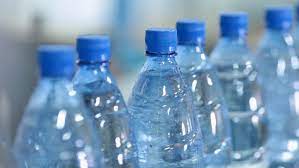
By Fraser Perkins —
“How much does it cost?” The usual context is that an item costs x number of dollars, euros, pounds, yen, yuan or whatever currency is in use wherever one is. The assumed context is that cost is measured in money; generally, this is a safe assumption, but not always.
Context matters. For one who is short of breath and contemplating a walk, cost may be measured in how much energy will be expended in walking. For a person close to death, cost may be measured in time. Is an activity worth the time when one’s time is measured in months or weeks?
Climate Change broadens the context of cost to include the amount of greenhouse gas produced when one buys a product or service. This may have little to do with the financial cost of an item. Consider bottled water. We’ve all used it – it’s convenient, plentiful and inexpensive, yet there’s an undeniable cost in terms of CO2. By some estimates one plastic half liter bottle of water generates three ounces of CO2. Not a big deal, right? Even less of an issue if the bottle is recycled, which reduces the carbon footprint by anywhere from 30% to 80%.
But these are only the direct energy costs. It takes energy to transport bottles to market and energy to transport used bottles to their final resting place – often in a landfill. Landfills contain two million tons of discarded water bottles. It takes energy to maintain landfills. If one broadens the concept of cost to include non-energy environmental costs, one must accept that it takes 1,000 years for a plastic bottle to decompose; during this time harmful chemicals are being released into the environment.
Quantity of use is another factor. One, or a hundred, or even a hundred thousand water bottles may not make much of a difference, but when tens of millions of Americans are using bottled water every day, the environmental costs snowball.
If one has ever visited a developing country, finding safe drinking water usually means bottled water. Getting enough fresh, clean water is a daily challenge, especially in a warm or humid climate. What a relief it is to come back to the good ‘ole USA where tap water is so safe and common, we take it for granted…and can leave bottled water in the rear-view mirror.
I toast you a glass of tap water, my favorite form of H20.

Leave a Reply